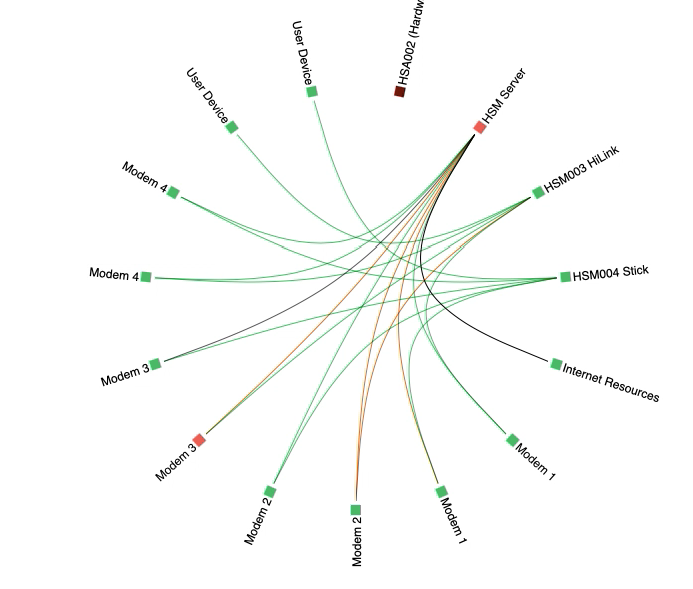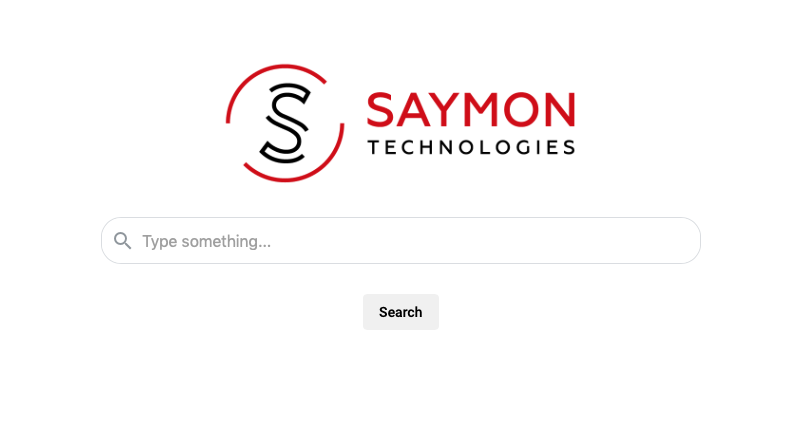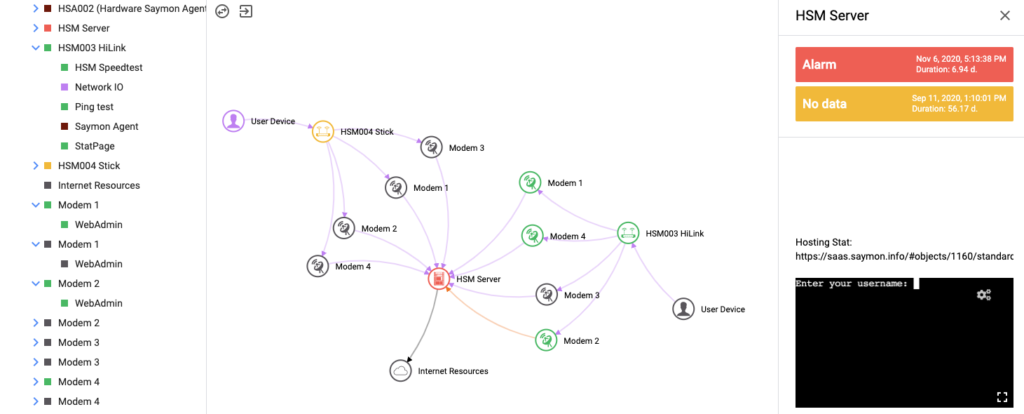Looks like the easiest way to find an object in SAYMON.
Unknown User
Description
This extension allows you to search objects and users by name, id, properties and operations in a simple Google’s Search manner.
Demo version
The one and only limit of the demo version – it searches through the first 1000 objects. So if your SAYMON instance stores less you are in the saddle. If there is more it’s ok, but keep in mind that search results can be incomplete. To obtain full version of SAYMON Search extension please contact us.
Install
Ssh to your SAYMON instance and navigate to the extensions folder. By default it is:
cd /opt/saymon-extensions/
Download demo version package:
wget https://saymon.tech/...
Unpack it with a command:
tar ...
Set permissions for the files and folders:
chown / chmod ...
Check installation by navigating your browser to the extensions’ list:
https://your_saymon_address/extensions
or to the SAYMON Search directly:
https://your_saymon_address/extensions/saymon-search
Uninstall
To uninstall extension ssh to your SAYMON instance and navigate to the extensions folder. By default it is:
cd /opt/saymon-extensions/
Remove extension’s files and folders:
rm -rf saymon-search
Check extensions’ list by navigating your browser to:
https://your_saymon_address/extensions
How to use
Load extension, type in a word or two and hit Enter.
Narrow down search results for complex searches by using Operators and Keys. For example, you can find objects of the specific class in a given state. See below.
Operators
It is possible to use and combine several operators in a search request.
AND
By default when you enter a single word to the search field you get all objects, that have got this string in name, properties or operations.
If you enter several words – they are separated by logical AND and SAYMON Search looks for objects with:
- all of these strings in name;
- all of these strings in properties;
- all of these strings in operations.
E.g. when you enter:
back linode
back AND linode
you get the following results:
- Linode Hosting Backups
- Linode Daily Backups
OR
Use the following syntax for logical OR:
back | linode
back OR linode
SAYMON Search looks for objects with any of the strings in object name, properties or operations:
- Linode Hosting Backups
- Linode hosting
- Object Backups
EXACT MATCH
Use quotes for the exact match.
Request:
"linode hosting backups"
Result:
Linode Hosting Backups
Combine them all
Use brackets to combine several operators, but please don’t forget to separate them with spaces.
Right syntax:
$class:"Host" AND ( $state:"Alarm" OR $state:"No data" )
Wrong one:
$class:"Host" AND ($state:"Alarm" OR $state:"No data")
Keys
By the way! You can tell SAYMON Search where to search…
SAYMON Search Developer
There are key words you can use to specify where to find strings you enter. Just type $ sign to the search field and see the complete list:
- $all: – search everywhere;
- $class: – search objects of the specified class;
- $document: – search in documents’ names;
- $id: – search by id;
- $monitoring: – search in monitoring settings;
- $name: – search in objects’ names;
- $operation: – search in operations’ names;
- $property: – search in properties’ names and values;
- $parent_id: – search objects by id of their parent object;
- $state: – search objects in the specified state;
- $tag: – search objects by tags;
- $url: – search in external links;
- $user: – search user by login, email or id.
These keys work really great with operators:
$class:"Host" AND $state:"Warning" AND ( $name:linode OR $name:DO ) AND $operation:delete
Release notes
v.1 – 2021/01/01
Initial release.





